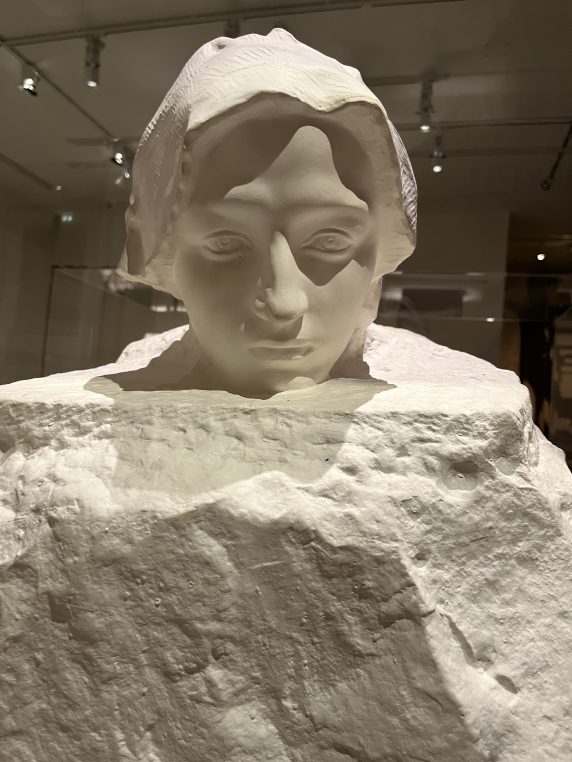It is quite a revolutionary exhibition which is presented at Musée Rodin on the great sculptor’s collections of antiques (6 000 pieces altogether) and his relationship with Egyptian sculptures. In “Rêve d’Egypte“, Egyptian dream, curated by Bénédicte Garnier, we learn that Rodin called his famous monumental sculpture of Balzac, his “Sphinx” or his “Memnon”. A statue of the New York born Duchesse de Choiseul, née Claire Coudert, takes after an Egyptian hairdo. These 400 pieces collected as soon as 1893 and exhibited in the house of Meudon as well as in the studios, were acquired from Egyptian art dealers or in Paris. They were restored during confinement and are shown in windows and on shelves in the former chapel of Hotel de Biron. Alabaster vases, sculpted bone objects, copt fabrics, masks, coffins, sonnets and pieces of architecture and of course sculptures form an eclectic collection which Amélie Simier, the new director of the museum is happy to show.

Auguste Rodin, Assemblage, Female nude, crossed arms, headless in an Egyptian jar, 1895-1910, and VI-IV bc
Rodin liked to play with his collection and sometimes added one of his sculptures to an antique vase. Or he modeled the head of a bishop in terracotta after photographs of Egyptian kings from the Cairo Museum. He loved funerary masks and owned 21 of them. He also had special artisans (including a Japanese) create basis for his Egyptian small statues. What is most interesting is the number of correspondences found by the curators like drawings of Cleopatra or the association of two statues in one, an idea copied on the statue cube from Senimen with three heads.
Photographs have been enlarged to show the statues as they were displayed in 1900 with the original model shown in front. A photograph of Isadora Duncan whom he loved, in front of a temple in Karnak, two sculptures of feet in bronze and in stone which he used for his sculptures, from 656 bc, and “The Walking Man” is set in front of a large vintage photograph of the pyramids. The atmosphere and his inspiration from Egypt are well rendered.
This very pretty exhibition is a good excuse to return to Musée Rodin which is always popular with American visitors. The sculptors’s works were acquired very early on in the US after WWI and are prominently shown in the museums. The bonus is to walk around the gardens which are large and roses are still in bloom in front of the house which should also be visited.
Until March 5, Musee Rodin
Share this Post




6 Comments on “Rodin loved Egyptian sculptures and found inspiration in them”
SUPER
trés intéressant, chère Laure, heureusement que vous êtes là pour signaler ce qui vaut la peine ….mc
What a great posting and a must see exhibition
Fantastic! Thank you Laure!
It looks astonishing.
On ne peut s’empêcher de rêver à une rencontre entre Rodin et Jaume Plensa…
Merci, Laure.